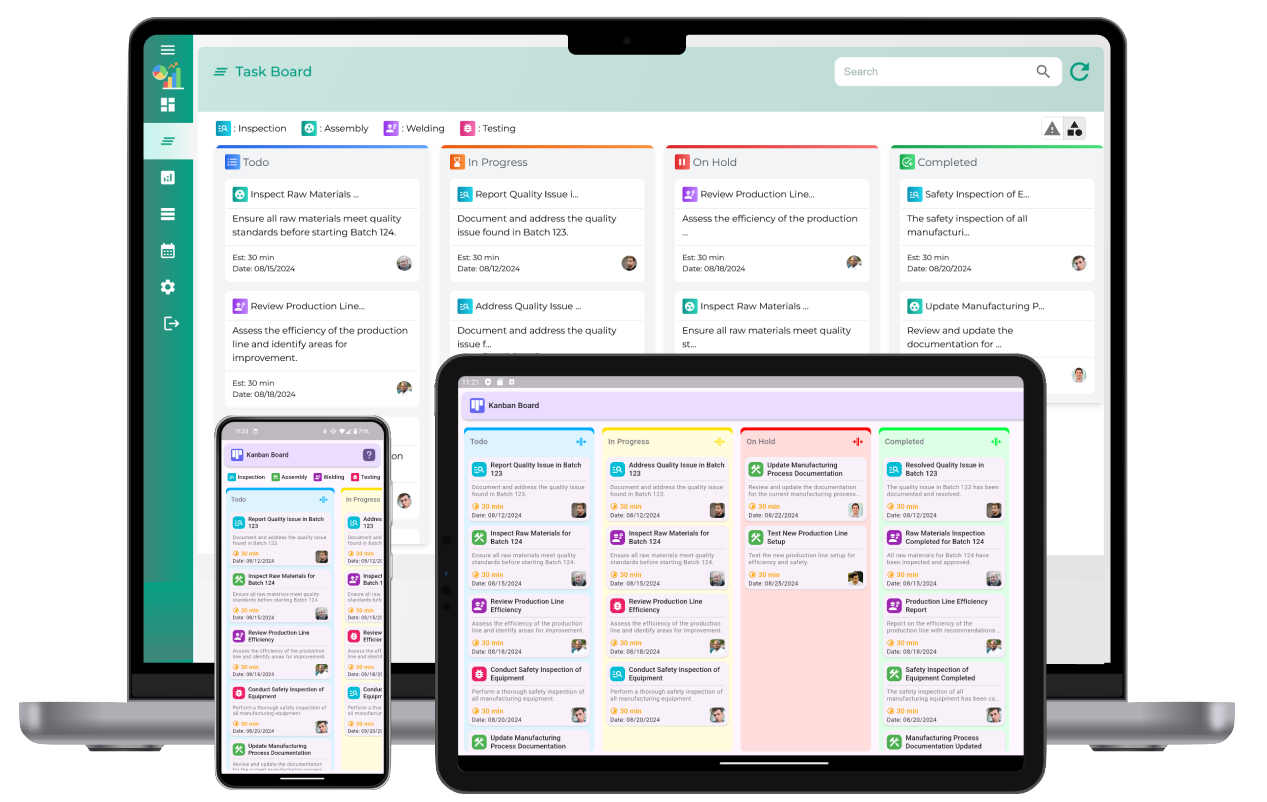Kanban is a powerful visual workflow management tool that helps IT project managers optimize efficiency, streamline processes, and track work progress. Originally developed in the manufacturing industry, Kanban has become widely used in software development and IT project management due to its flexibility and effectiveness in managing tasks.

What is Kanban?
Kanban is a system that enables teams to visualize work, manage flow, and continuously improve processes. It is based on a board that contains different columns representing various stages of the workflow. Tasks are represented by Kanban cards that move across these columns as work progresses. This approach allows teams to track work in real-time and identify bottlenecks that may slow down productivity.
Why IT Project Managers Should Use Kanban
IT project managers often deal with dynamic and complex projects where priorities shift frequently. Kanban provides a structured yet flexible way to manage tasks efficiently. Here are some key benefits:
- Improved Visibility: A Kanban board provides a real-time overview of all ongoing tasks, making it easy to track progress and identify issues.
- Enhanced Productivity: By limiting the number of tasks in progress, teams can focus better and complete work faster.
- Reduced Bottlenecks: Kanban helps identify inefficiencies, ensuring work flows smoothly from one stage to the next.
- Better Collaboration: Team members can update tasks in real-time, improving communication and accountability.
How to Implement Kanban in IT Project Management
Step 1: Define Your Workflow
Establish the key workflow stages such as "Backlog," "In Progress," "Testing," and "Completed." Customize these stages based on project needs.
Step 2: Create and Organize Kanban Cards
Each task is represented by a Kanban card containing details such as task description, priority, assignee, and deadlines.
Step 3: Set Work in Progress (WIP) Limits
Implement WIP limits to prevent task overload and ensure a smooth workflow. This helps maintain efficiency and avoid resource bottlenecks.
Step 4: Monitor and Optimize Workflow
Regularly update the board to track task movement and identify inefficiencies. Use analytics to refine the workflow.
Common Challenges When Using Kanban
While Kanban is a simple yet effective system, IT project managers may face challenges such as:
- Resistance to Change: Some team members may be hesitant to adopt a new system. Providing proper training and demonstrating the benefits can help.
- Unclear Task Definitions: Poorly defined tasks can lead to confusion. Ensuring all cards have clear details prevents misunderstandings.
- Failure to Update the Board: A Kanban board is only useful if it is updated regularly. Encouraging team members to maintain accurate records is essential.
Best Practices for Using Kanban in IT Project Management
To maximize the effectiveness of Kanban, IT project managers should consider the following best practices:
- Keep the Board Simple: Avoid overcomplicating the board with too many columns or unnecessary details.
- Encourage Team Collaboration: Ensure all team members are actively participating in maintaining and updating the Kanban board.
- Review and Improve Regularly: Use insights from the board to optimize workflows and enhance productivity.
Key Benefits of Kanban for IT Project Managers
- Enhanced Task Visibility: Provides a clear visual representation of work progress.
- Improved Efficiency: Helps teams prioritize tasks and reduce waste.
- Better Team Collaboration: Promotes transparency and smooth communication.
- Adaptability: Allows for quick adjustments to changing project requirements.
Beginner's Guide to Kanban for IT Project Managers
What is Kanban in IT project management?
Kanban is a visual workflow management system that helps IT project managers track and optimize task progress.
How does Kanban improve IT project management?
Kanban improves efficiency by visualizing tasks, limiting work-in-progress, and optimizing workflows.
What are the key principles of Kanban?
Key principles include visualizing work, limiting WIP, managing flow, making policies explicit, implementing feedback loops, and improving collaboratively.
How does a Kanban board work?
A Kanban board visually represents tasks across different stages, such as "To Do," "In Progress," and "Done."
What are the main components of a Kanban board?
Kanban boards typically include columns, task cards, WIP limits, swimlanes, and real-time updates.
How can IT teams use Kanban for task management?
Teams can track tasks, set priorities, monitor progress, and ensure workflow efficiency using Kanban.
What are work-in-progress (WIP) limits in Kanban?
WIP limits restrict the number of tasks that can be worked on simultaneously to avoid bottlenecks.
How does Kanban help in identifying bottlenecks?
By visualizing task flow, teams can spot delays and take action to resolve inefficiencies.
Can Kanban be used with Agile methodologies?
Yes, Kanban is often used alongside Agile methods like Scrum to enhance project flexibility and efficiency.
What are the benefits of using Kanban for IT project tracking?
Benefits include better task visibility, improved efficiency, reduced delays, and enhanced team collaboration.
How do you prioritize tasks in a Kanban system?
Tasks can be prioritized based on deadlines, dependencies, urgency, and team capacity.
Can Kanban be used for DevOps and software development?
Yes, Kanban is widely used in DevOps and software development for managing sprints, bug tracking, and deployment pipelines.
What metrics are used to measure Kanban performance?
Key metrics include cycle time, lead time, throughput, and cumulative flow diagrams.
How do you implement Kanban in an IT project team?
Implementation involves setting up a Kanban board, defining workflows, setting WIP limits, and continuously improving processes.
What are the best practices for managing an IT project with Kanban?
Best practices include regularly reviewing workflow, limiting multitasking, monitoring progress, and adapting to team needs.